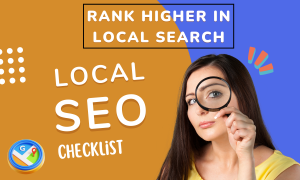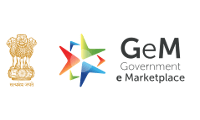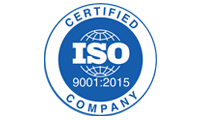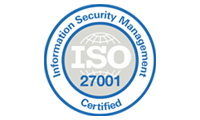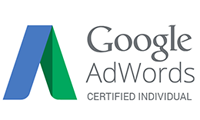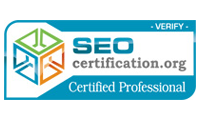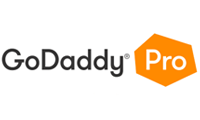Digital growth in 2025 is essential for every business and service provider to stay ahead in the race. To do this, businesses are always searching for methods to attract traffic and boost their sales. One of the most prominent strategies to do so is PPC advertising. But what is PPC, and how does PPC advertising work?
What is PPC?
PPC is an online advertising model in which advertisers bid for ad placements on search engines, social media, and other platforms. Each time a user clicks on an ad, the advertiser pays a predetermined cost. This method enables businesses to reach potential customers instantly and efficiently.
For example, when you search for “shoes” on Google, the top results often include sponsored ads. These are PPC ads, and companies pay for each click they receive.

What is the full form of PPC?
PPC stands for Pay-Per-Click advertising. It is an online advertising model where advertisers pay a particular fee each time a user clicks on their ad. It is used in search engine marketing and social media advertising to increase targeted traffic on websites, which eventually generate leads and sales for the business.
How does PPC advertising work?

PPC or Pay-Per-Click, advertising works on a bidding system; here, advertisers have to pay a particular fee every time the user clicks on their ads. In this way, businesses can buy website visits instead of earning them organically. Here is a step-by-step breakdown of how it works:
1. Auction-Based Model
Pay-Per-Click advertising works on an auction-centric model. Advertisers bid on certain keywords relevant to their business. The auction-centric model ensures that ads are displayed to users who are searching for related products and services.
How the Auction Works:
Here is how the auction-based PPC model works:
- Bidding on Keywords: Advertisers select specific keywords on which they run their ads and set a maximum bid (the highest fee they are willing to pay per click).
- Quality Score: The bid amount is not the only factor that determines the ad’s placement. A quality score is used by search engines such as Google to evaluate the relevance, expected click-through rate (CTR), and landing page experience of an advertisement. With a higher quality score, the cost of an ad can be reduced while its ranking may increase.
- Ad Rank Calculation: The advertiser’s bid and quality score are used by search engines to calculate ad rank. The best ad placement is captured by the advertiser with the highest ad rank.
- Cost-Per-Click (CPC): CPC is Cost-Per-Click, It is dependent on multiple factors like competition, quality score, and strategy of bidding (auto or manual). Instead of paying their entire maximum bid, advertisers frequently pay a little bit more than the next highest bidder.
Businesses can minimize their cost per click (CPC) while preserving high ad visibility by optimizing the landing page experience and ad relevancy.
2. PPC Ad Platforms
There are so many platforms available that run PPC advertising campaigns. Each and every platform is used to target a different audience and has its own unique benefits. Here are some prime examples of some of these platforms and the benefits they offer:
Google Ads

- Google Ads is the most popular platform for PCC advertising.
- It displays ads on Google search results, its partner websites, and YouTube.
- Google Ads offers different types of ad formats.
Bing Ads (Microsoft Advertising)

- It’s Microsoft’s search engine advertising platform.
- It shows advertisements in Bing, Yahoo, and MSN search results.
- It has a low Cost-Per-Click because it is frequently less competitive than Google Ads.
Meta Ads

Facebook Ads
- You can run ads on Facebook through Facebook ads to target users using demographics, interests, and behaviors.
- Facebook ads support pictures, videos, and carousel ads.
- Sponsored advertisements are displayed in Facebook feeds, Stories, Messenger, and audience networks.
Instagram Ads
- Instagram is a visually appealing PPC advertising platform linked with Facebook Ads Manager.
- The platform supports different types of formats, like Facebook.
- The platform is perfect for businesses that are targeting a younger audience.
LinkedIn Ads

- LinkedIn Advertising PPC platform specializes in B2B marketing and targeting working professionals.
- The advertising platform provides sponsored content, message ads, and text-based ads.
- It is ideal for businesses that want to target decision-makers in particular industries.
Amazon Ads

- Amazon Ads enable its sellers to promote their products on Amazon’s search results and product pages.
- Amazon advertisements work well for businesses, especially for e-commerce, who want to increase sales in Amazon’s marketplace.
Each of these platforms has its own unique benefits, and a business should always choose a platform that aligns with its ad goals and targeted audience.
3. Types of PPC Advertising
Pay-Per-Click advertising is a marketing strategy that helps businesses place advertisements on search engines, websites, social media, and video streaming services. Here are all the types of PPC advertising, each used for different kinds of purposes and targeted audiences.
Search Ads

Search ads are the most common type of PPC advertising. Whenever the user searches for a specific keyword related to a service, product, or topic, they can see these search ads at the top or bottom of SERPs (search engine results pages). These Advertisements are text-based and look like organic search results but are labeled as “sponsored” or “ad.” Google Ads and Bing Ads are examples of search ads.
Display Ads

Display ads are visual banners commonly seen on third-party websites, mobile ads, and GDN (Google Display Network) sites. These advertisements use graphics, including images, animation, and media content, to attract the user’s attention. Google Display Network and Microsoft Audience Network are some examples of display ads.
Shopping Ads

Shopping ads, which are also known as product listing ads or PLAs, provide product photos, pricing, store names, and product descriptions directly in search engine results. For e-commerce businesses, these ads are very effective as they give detailed product information easily. Platforms like Google Shopping Ads and Microsoft Shopping Campaigns are prime examples of shopping ads.
Social Media Ads

With PPC advertising on social media platforms, businesses can target users based on interest, location, demographics, and behaviors. Social media ads can appear as posts, carousels, stories, or video ads in user’s feeds. Examples of social media ads are Facebook ads, Instagram ads, LinkedIn ads, X (Twitter) ads, and Pinterest ads.
Video Ads

Multiple video streaming platforms show video ads across websites within video content. These ads can be categorized as skippable and non-skippable. These ads can be at the start, middle, and end of the video content. YouTube ads, Facebook video ads, and TikTok ads are some examples.
Remarketing Ads

Remarketing ads are advertisements that target users who have already visited a site and are intracted by an ad or product but, for some reason, did not complete the action. These ads work as a reminder to bring those users back. Google Ads Remarketing, Facebook Retargeting, and LinkedIn Retargeting are some examples of remarketing ads.
Key Components of a Successful PPC Campaign
A successful PPC campaign needs proper strategy planning to increase visibility and conversions. In a successful campaign, costs can be controlled with the aid of efficient bidding techniques, and campaign performance can be enhanced and refined with the use of tracking and analytics. Below we discuss the essential components of a successful PPC campaign.
1. Keyword Research & Selection
The success of PPC depends on selecting the right keywords. High-performing keywords can be found with the use of tools like Ahrefs, SEMrush, and Google Keyword Planner.
2. Ad Copy & Landing Page Optimization
- Write compelling ad copy with powerful CTAs.
- Make sure landing pages are on topic, mobile-friendly, and conversion-optimized.
3. Bidding Strategies & Budgeting
- Manual bidding: Provides complete control over bids.
- Automated Bidding: Leverages AI to improve bid strategy.
- Set campaign and daily budgets in order to manage costs.
4. Tracking & Analytics
- Utilize tools like Google Analytics and Google Ads Reports to track performance.
- Monitor metrics like CTR (Click-Through Rate), CPC (Cost-Per-Click), conversion rate, and ROAS (Return on Ad Spend).
How to Get Started with PPC Advertising?
To get the best results when starting a PPC advertising campaign, careful planning and strategic execution are necessary. Whether your goal is to raise brand awareness, generate leads, or increase sales, a successful and cost-effective PPC campaign can be achieved by following the right steps.
1. Set Clear Campaign Goals
When starting a PPC advertising campaign, it is important to set specific objectives. Consider things like: What do you want to achieve with your PPC campaign? Some traditional goals include:
- Brand awareness: Reaching a wider audience and becoming more visible.
- Lead generation: Collecting potential customers’ details through sign-ups and forms.
- Sales and conversions: Promote direct sign-ups or purchases.
Having a clear objective will determine your ad strategy, such as the ads type, medium, and budgeting.
2. Choose the Right PPC Platform
When starting a PPC advertising campaign, your business type and target audience are essential factors for choosing the perfect platform. Every PPC advertising platform is different and serves unique goals and purposes:
- Google Ads: This is perfect for display campaigns and shopping ads. Google Ads helps generate traffic through searches.
- Microsoft Ads (Bing Ads): It is a great alternative of Google Ads, and it is less competitive compared to Google Ads.
- Facebook & Instagram Ads: Excellent for engagement on social media, retargeting, and visual advertising.
- LinkedIn Ads: Ideal for B2B advertising and helps in reaching professionals.
- YouTube Ads: Best for brand narratives and product demonstrations using video content.
Selecting the right platform allows your ads to reach the right audience in the most effective manner.
3. Create & Optimize PPC Ads
Visual components and well-written ad copy are essential for a successful PPC campaign. Ad optimization makes your campaign yield the best outcomes at the lowest cost. Follow these best practices:
- To promote clicks and conversions, craft persuasive ad copy that includes a clear call to action (CTA).
- To increase visibility, use ad extensions like structured snippets, site links, and callouts.
- Optimize landing pages with mobile-friendly designs that align with ad intent and ensure a smooth user experience.
- To attract attention, include high-quality photos or videos (for display and social ads).
4. Monitor & Adjust for Better Performance
Continuous monitoring and optimization are necessary for PPC advertising in order to optimize return on investment (ROI). Key strategies include:
- To find the most effective ad variations, A/B tests them.
- To reduce expenses and enhance ad placement, bids are modified according to performance.
- Targeting users who convert well by improving audience targeting.
- Boosting budgets on high-performing advertisements in order to scale successful campaigns. Frequent campaign data analysis aids in strategy improvement and increases overall efficacy.
Benefits of PPC Advertising
In comparison to SEO and other organic marketing strategies, PPC offers instant results and extensive control over ad spend. Here are the key benefits of Pay-Per-Click advertising:
1. Instant Visibility
One benefit of PPC advertising is its ability to give instant results. Ads start displaying as soon as the PPC campaign is launched. It makes it a great option for businesses that desire quick growth.
2. Cost Control
With PPC advertising you have full control of your budget and spending plans. By this advertiser can:
- To avoid overspending, you can set daily or campaign budgets.
- Alter bids based on performance to increase ROI.
- Campaigns can be paused, resumed, or stopped at any moment without committing long-term.
Because of this, businesses of all sizes can participate in PPC advertising while keeping control over their ad spend.
3. Targeting Accuracy
Advanced targeting options provided by PPC platforms enable advertisers to display their ads to the right audience at the right moment. Businesses can target users based on location, demographics, device type, behavior, and interests.
4. Measurable Results & Performance Tracking
PPC advertising provides detailed analytics and performance insights, enabling advertisers to track:
- Click-Through Rate (CTR)
- Cost-Per-Click (CPC)
- Conversion Rate
- Return on Ad Spend (ROAS)
Businesses can track the performance of their ads in real time and optimize campaigns by using tools like Google Analytics and Google Ads Reports. Because of this transparency, ROI is increased by determining what works and getting rid of what doesn’t.
Challenges and Common Mistakes in PPC Advertising
Pay-Per-Click advertising is considered a very effective technique, but it still has its own set of challenges. Many advertisers fail to get their desired results due to common mistakes in their PPC campaigns. Here are some challenges and mistakes to avoid in PPC advertising by understanding these businesses optimizing their strategy and reducing errors:
1. High Competition & Cost
The cost per click rises in industries with highly competitive bidding, such as insurance, legal services, and finance. Smaller-budget businesses might struggle to compete, which could result in high ad spending with a small return.
2. Poor Keyword Selection
Selecting keywords that are too general or irrelevant may draw in the wrong audience, leading to clicks that do not convert into sales. Without conducting adequate keyword research and using the right match types, advertisers may face difficulty connecting with their ideal clients.
3. Ignoring Negative Keywords
Not using negative keywords is another common error that can significantly impact the performance of PPC campaigns. Negative keywords remove pointless search terms and make sure that only truly interested users can see advertisements.
4. Ineffective Landing Pages
A landing page that is slow, hard to use, or irrelevant to the advertisement is likely to drive users away without any action. A high bounce rate not only lowers conversions but can also impact the quality score of the ad, making it more expensive to run. It is critical to make sure landing pages are mobile-friendly, ad intent-aligned, and user-experience-optimized.
5. Not Tracking Campaign Performance
Advertisers may be unable to improve their results if they fail to track campaign performance. PPC platforms offer useful information on metrics such as return on ad spend, click-through rates, and conversion rates. Without constant observation and modification, businesses run the risk of executing ineffective campaigns that do not produce the desired results. Over time, regular analysis and A/B testing aid in strategy refinement and ad performance optimization.
PPC vs. SEO: Which is Better?
Both PPC and SEO are efficient techniques and come with a set of advantages. To compare both of these, we need to understand them first.
Pay-Per-Click (PPC) Advertising:
It is a paid digital marketing strategy in which businesses bid on keywords and run their ads on search engine results and on other PPC platforms. In pay-per-click, advertisers have to pay a fee amount each time their ads are clicked by a user.
Search Engine Optimization (SEO):
SEO is a long-term marketing strategy in which you optimize a website’s content, structure, and backlinks to enhance its organic rankings on search engines. SEO is free but takes time more than PPC.
Difference between PPC and SEO
| Feature | PPC Advertising | SEO (Search Engine Optimization) |
| Speed | Give quick results, and ads appear immediately after launch. | Slow and take time to rank, needs regular optimization. |
| Cost | The cost will depend on the bidding strategy and competition. Pay for each click. | Organic traffic is free of charge, but content and optimization require investment. |
| Sustainability | Works as long as you pay, traffic stops once the budget runs out. | Rankings remain even without continuous spending. |
| Click-Through Rate (CTR) | Lower compared to organic results as users recognize paid ads. | High as users are more likely to click on organic listings. |
| Return on Investment (ROI) | Short-term ROI, gives quick results but can be expensive | Higher long-term ROI, sustainable and cost-effective over time. |
Which One Should You Choose?
To choose one from PPC and SEO, you need to determine the timeline, budget, and business objectives. While SEO is better for long-term growth, PPC is best for short-term campaigns and instant traffic. To get the most out of both approaches, many businesses use SEO for long-term success and PPC for short-term gains.
Conclusion
PPC advertising serves as an essential digital tool for businesses to gain targeted traffic and increase conversions. Businesses can obtain substantial success in Pay-Per-Click campaigns by understanding how it works, choosing the right keywords, and creating optimal ad content while monitoring regular performance.
PPC proves important in digital marketing because it complements SEO strategies by delivering instant results and service as an indispensable digital marketing component. Because PPC helps businesses reach their marketing goals, it is not important how big your company is.
Frequently Asked Questions
What PPC mean?
PPC means Pay-Per-Click, it is an online advertisement model in which advertisers pay a fee every time their ad is clicked by a user.
How does PPC work?
PPC works through an auction-based model in which advertisers bid on specific keywords, and search engines determine ad placements according to the bid amount and ad quality.
How to start a PPC campaign?
To start a PPC campaign, a business has to follow these steps:
- Set clear goals
- Choose a platform
- Conduct keyword research
- Create compelling ads
- Set a budget
- Continuously monitor performance.
What is the difference between PPC and SEO?
PPC is a paid advertisement strategy that helps businesses run ads and generate quick traffic, while SEO is an organic strategy that focuses on organic swatch rankings through optimization.
How much does PPC cost?
The cost of a PPC campaign is varied and can be based on several factors, such as industry, competition, and keywords. Advertisers set budgets, and costs are determined by CPC (Cost-Per-Click).
Is PPC effective for small businesses?
Yes, PPC is very effective for small businesses because it provides measurable results and targeted advertising at a low cost.


